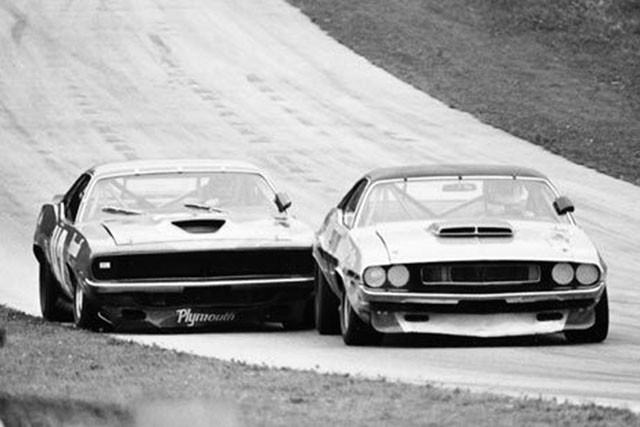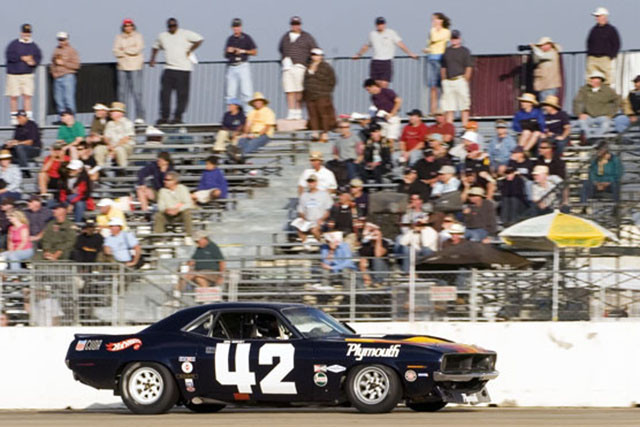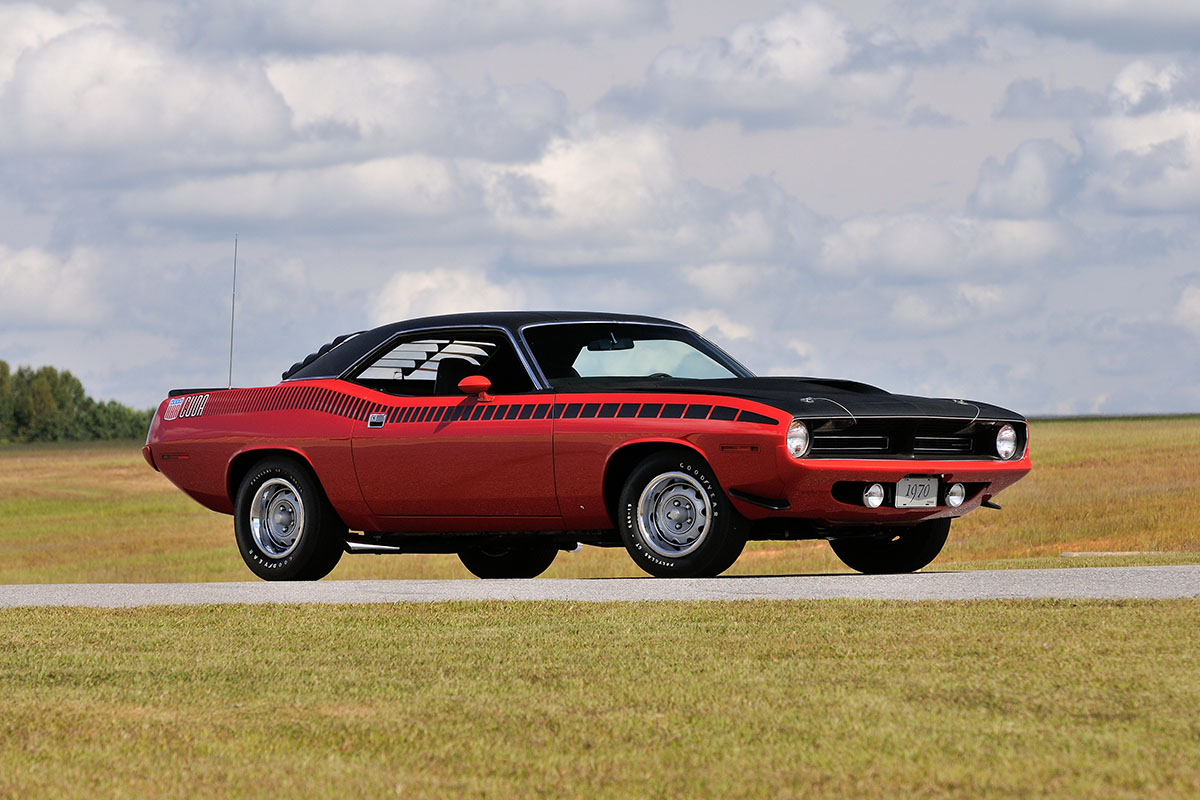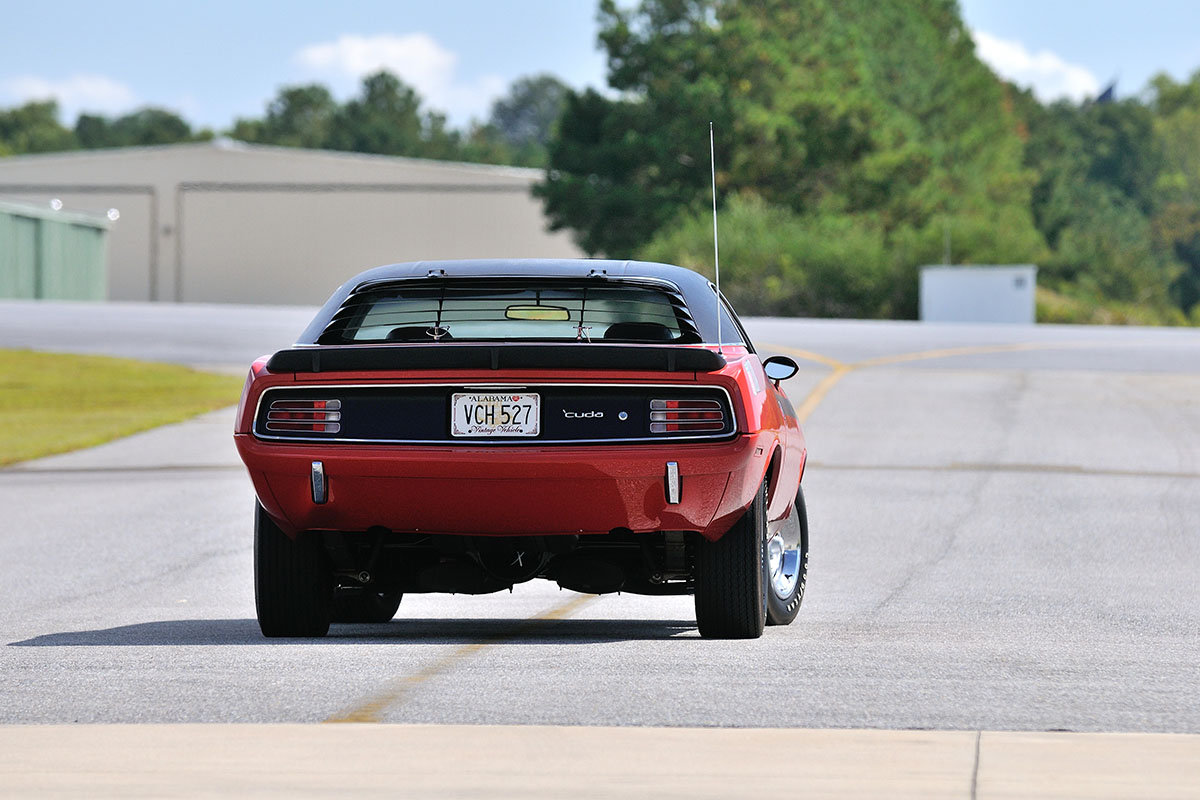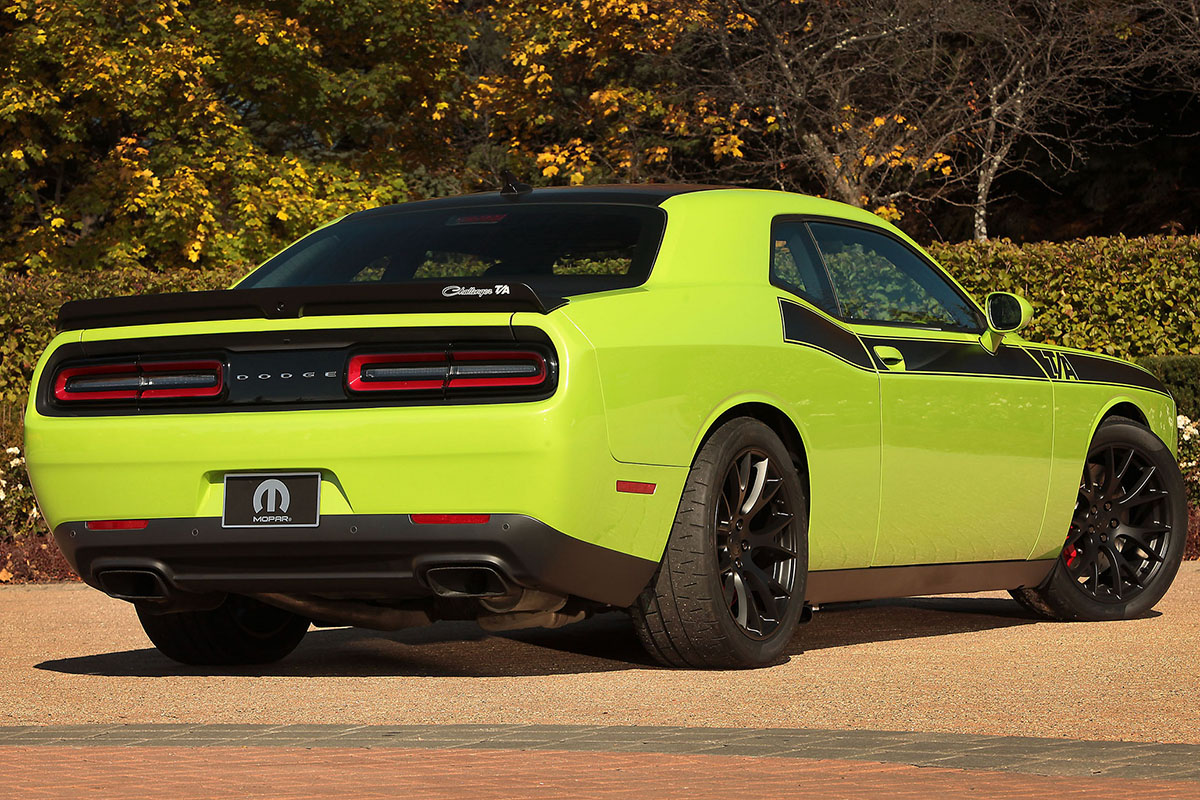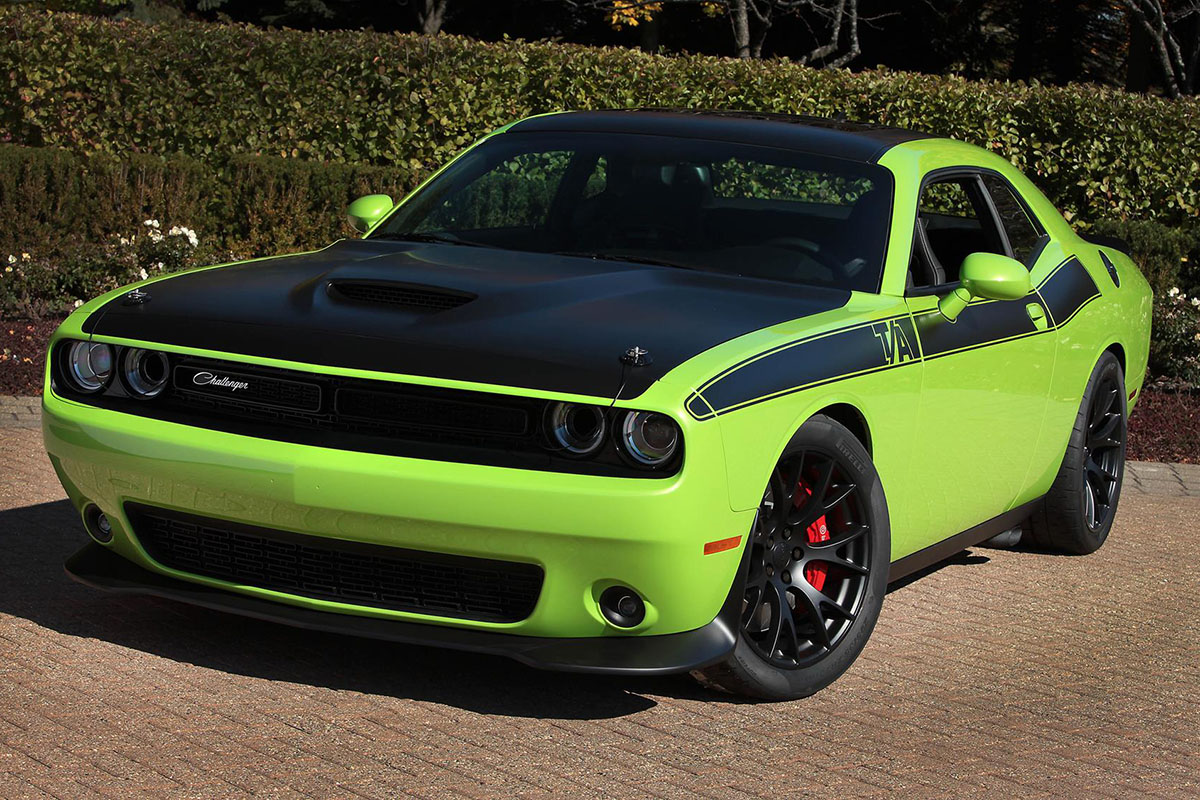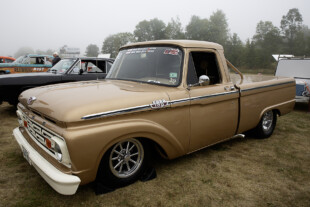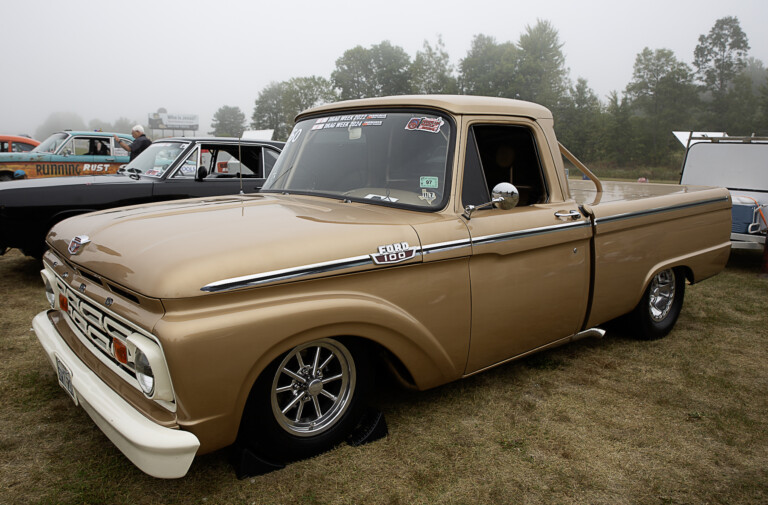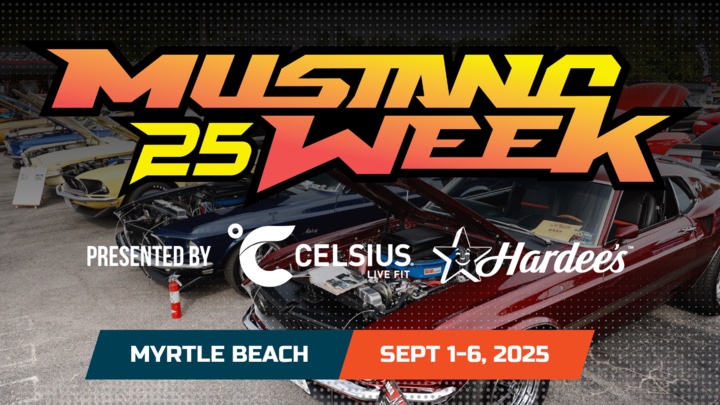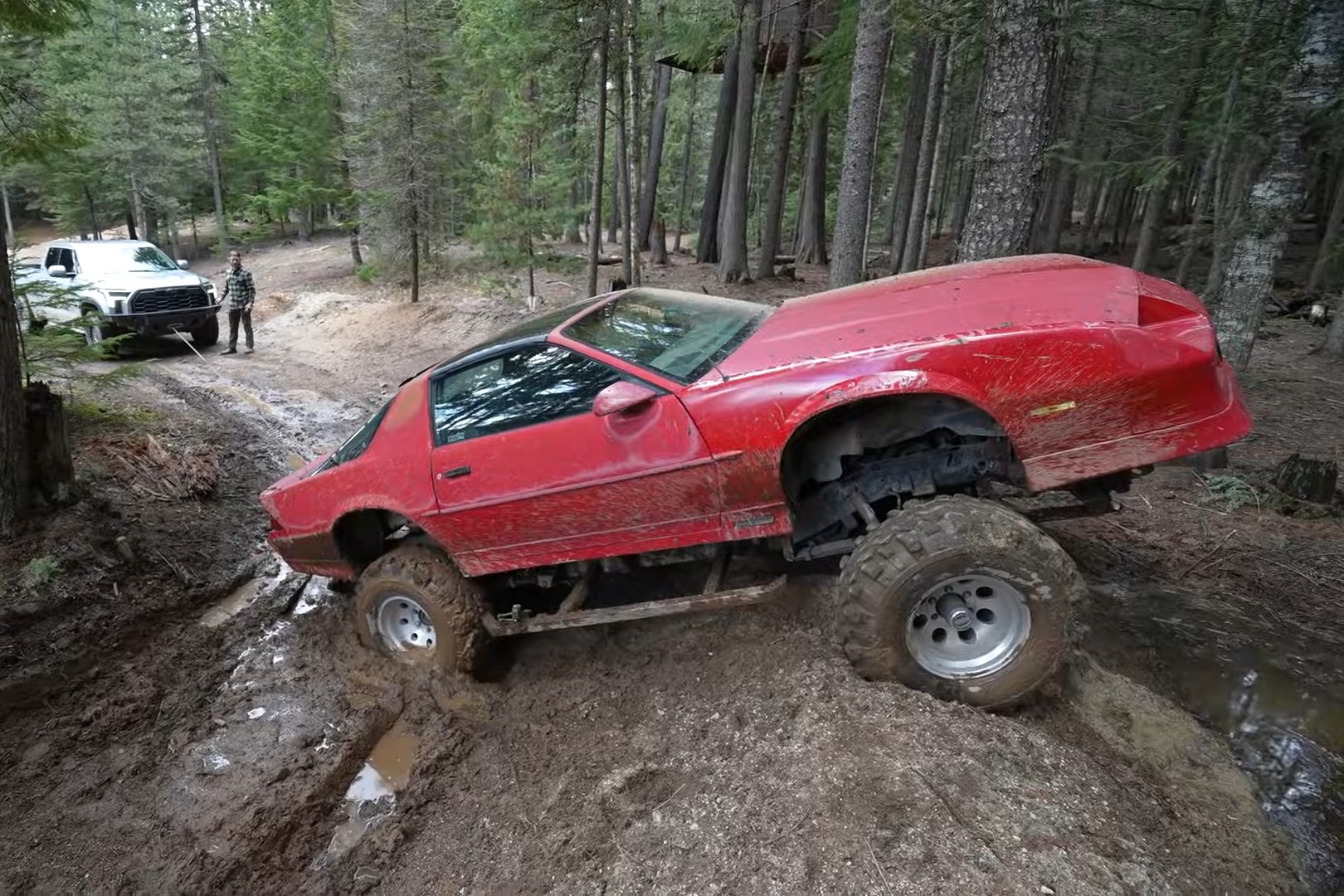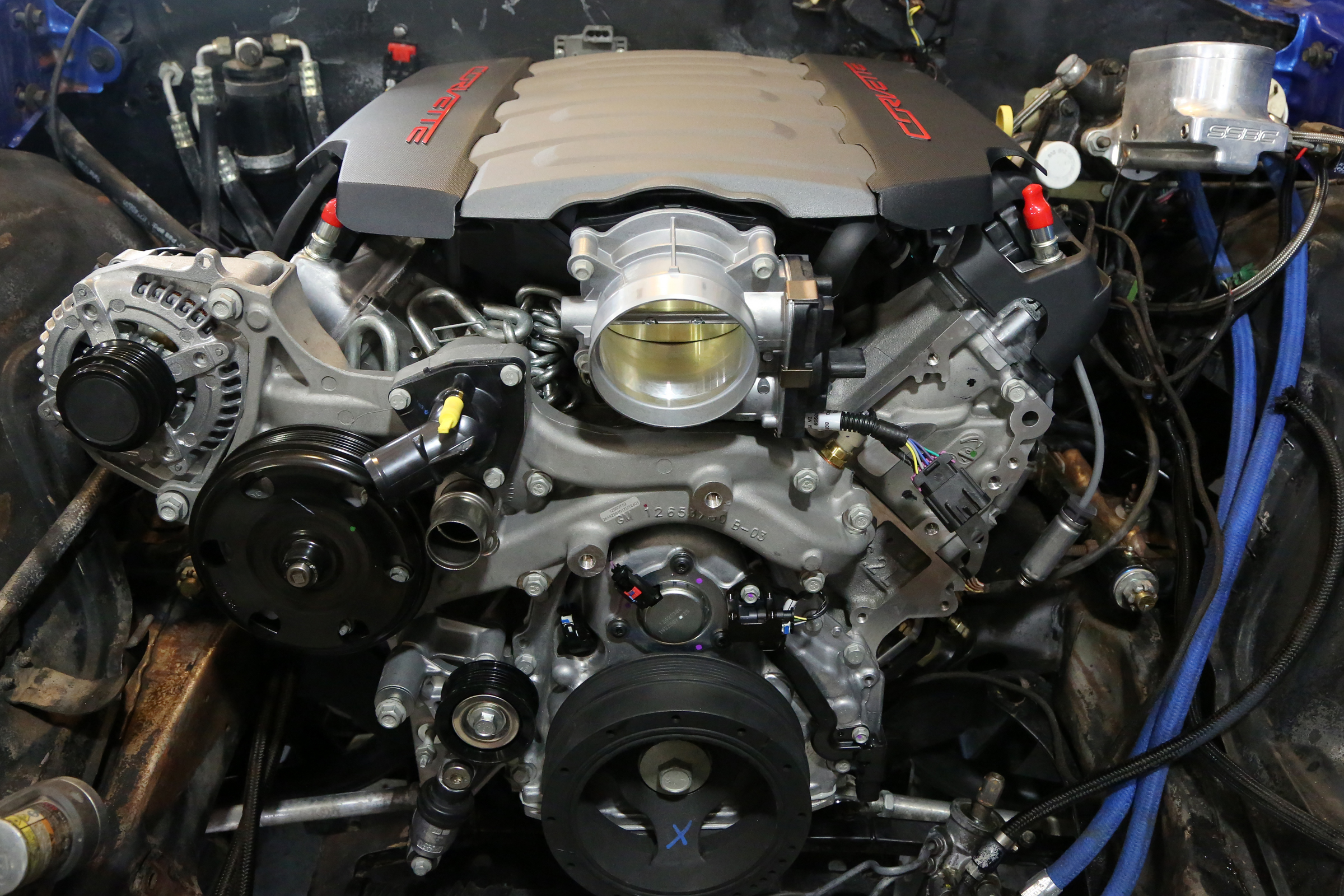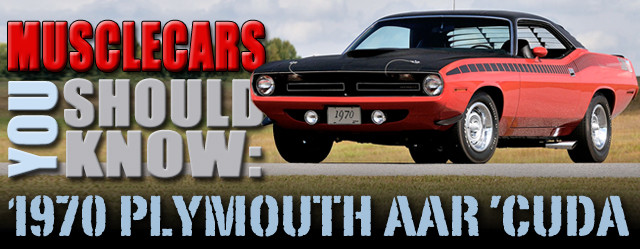 In 1966 the Sports Car Club of America introduced the Trans-American road racing series, also known as TransAm, for “production small sedans.” In an era that championed the “Win on Sunday, sell on Monday” mantra, all of the major American manufacturers were eager to showcase their muscle coupes in the series. In order to campaign a race car in TransAm, the rules stipulated that manufacturers need to build a limited number of road-going versions of their race car – known colloquially as homologation specials – that would be available for sale to the public.
In 1966 the Sports Car Club of America introduced the Trans-American road racing series, also known as TransAm, for “production small sedans.” In an era that championed the “Win on Sunday, sell on Monday” mantra, all of the major American manufacturers were eager to showcase their muscle coupes in the series. In order to campaign a race car in TransAm, the rules stipulated that manufacturers need to build a limited number of road-going versions of their race car – known colloquially as homologation specials – that would be available for sale to the public.
For Ford, this resulted in the Mustang Boss 302. Chevrolet threw its hat into the ring with the introduction of the Z/28 Camaro, and Pontiac also got into the mix with the Firebird Trans Am, while AMC entered the fray as well with the Javelin.
Chrysler decided to jump in with both feet and bring both the Dodge brand, which had a brand new pony car to show off with the Challenger, and Plymouth, who had a totally redesigned third-generation Barracuda to launch for the 1970 model year, into the series as well. The result was the Plymouth AAR ‘Cuda – named after Dan Gurney’s All American Racing team – and the Dodge Challenger T/A.
TransAm required all motors not exceed 305 cubic inches of displacement, so Chrysler’s Trans-Am manager Pete Hutchinson and engine builder Keith Black took a small block, 340ci V8 and destroked it to 303.8 cubic inches. Outfitted with new cast iron heads with massive ports and a host of other race-specific internals, the motors developed in excess of 460 horsepower, a number that is said to have grown significantly throughout the debut season as tuning and further development progressed.
Dan Gurney and Swede Savage were called in to race identical factory-sponsored AAR ‘Cudas in the 1970 Trans-Am Series. The cars were undoubtedly fast, earning the pair several pole position qualifying starts throughout the season, but mechanical gremlins hampered the teams, which resulted in a second place podium spot at Road America being the best finish of the race season.
Dig this recent onboard footage of Andy Boone piloting Dan Gurney’s #42 AAR Cuda at Road America in the Historic TransAm series:
Chrysler would end up pulling the plug on their TransAm efforts after just one season, but not before Plymouth had a chance to build 2,724 examples of the road-going version of the AAR ‘Cuda.
There really isn't a bad angle on this car, is there? Images: AutoWP
Available for the 1970 model year only, the street version of the AAR ‘Cuda differed from the race cars substantially, but it wasn’t just an appearance package either.
 Fitted with identical mechanical upgrades, both the Dodge Challenger T/A and the Plymouth AAR ‘Cuda received a high revving 340 small block V8 with a special block, heads, and an Edelbrock intake manifold with three Holley 2-barrel carburetors, known as the 340 Six Pack. While the engine was rated at 290 horsepower, it was widely considered to generate significantly more grunt, with estimates putting that number at over 320hp.
Fitted with identical mechanical upgrades, both the Dodge Challenger T/A and the Plymouth AAR ‘Cuda received a high revving 340 small block V8 with a special block, heads, and an Edelbrock intake manifold with three Holley 2-barrel carburetors, known as the 340 Six Pack. While the engine was rated at 290 horsepower, it was widely considered to generate significantly more grunt, with estimates putting that number at over 320hp.
That powerplant was mated to either a close-ratio A-833 four-speed manual gearbox or a three-speed TorqueFlight automatic. The standard rear end was an 8.75-inch Sure-Grip unit that came standard with a 3.55:1 gear ratio, while a 3.91 gear ratio was a no-cost option as well.
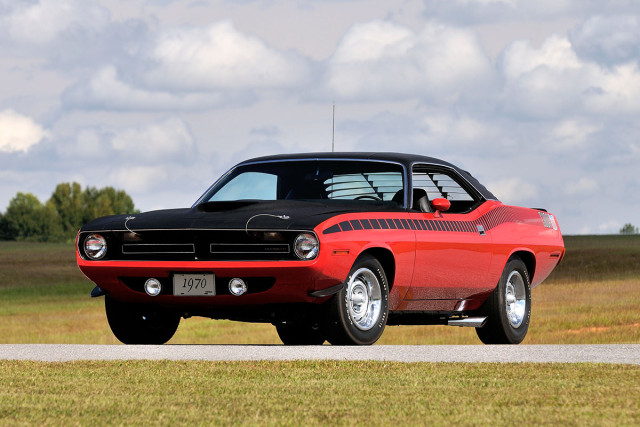 With a curb weight of just over 3400 pounds, it was enough to get the cars from 0-60 mph in 5.8 seconds on their way to a respectable 14.4 second quarter mile time.
With a curb weight of just over 3400 pounds, it was enough to get the cars from 0-60 mph in 5.8 seconds on their way to a respectable 14.4 second quarter mile time.
Since the AAR ‘Cuda was based on a road racer rather than a quarter mile dragster, unlike most muscle cars of the time, it received a number of enhancements aimed at improving the car’s driving dynamics rather than focusing solely on straight line performance.
Accordingly, the AAR ‘Cuda and Challenger T/A were fitted with upgraded suspensions that included stiffer dampers, a heavy duty torsion bar system up front and a beefed up leaf spring configuration out back along with bigger sway bars. Stopping performance was enhanced with heavy duty power-assisted front disc brakes and bigger rear drums, and Chrysler’s 15 x 7 Rallye rims were supplied with Goodyear Polyglas GT rubber. For the steering duties a manual rack was standard while a power-assisted option graced the options sheet, along with a quicker ratio unit that was also available upon request.
In addition to the performance enhancements, the cars also received a number of visual tweaks as well.
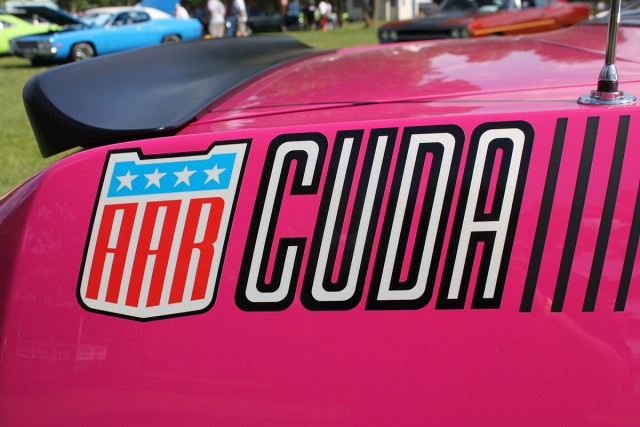 Unique to the AAR ‘Cuda was the strobe-style AAR side stripe which starts at the front of the car and ends on the rear fender with the All American Racers logo. Replacing the wing on the rear decklid is a ducktail-style rear spoiler to compliment the unique dive plane-style spoilers affixed to the front clip.
Unique to the AAR ‘Cuda was the strobe-style AAR side stripe which starts at the front of the car and ends on the rear fender with the All American Racers logo. Replacing the wing on the rear decklid is a ducktail-style rear spoiler to compliment the unique dive plane-style spoilers affixed to the front clip.
Perhaps the most visually striking aspect of the AAR ‘Cuda package was its fiberglass hood, which received a matte black finish (along with the tops of the fenders and a small portion of the doors) regardless of what shade of paint the car was optioned with. A large and functional NACA duct-style scoop sat in the center of the hood, which fed fresh air to the 340 V8 through a unique Six Pack air cleaner.
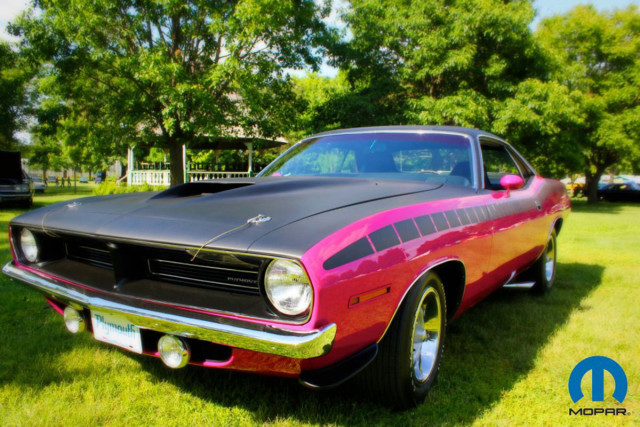 Rounding out the package was a pair of side-mounted exhaust pipes, unique to the Challenger T/A and AAR ‘Cuda. Rather than route its exhaust system out to the back of the car through the rear fascia, which was the typical design for other Mopar E-bodies, these cars had exhaust systems which exited just in front of the rear wheels, giving the AAR and T/A not only an added dose of visual drama, but also a more lively soundtrack for the occupants.
Rounding out the package was a pair of side-mounted exhaust pipes, unique to the Challenger T/A and AAR ‘Cuda. Rather than route its exhaust system out to the back of the car through the rear fascia, which was the typical design for other Mopar E-bodies, these cars had exhaust systems which exited just in front of the rear wheels, giving the AAR and T/A not only an added dose of visual drama, but also a more lively soundtrack for the occupants.
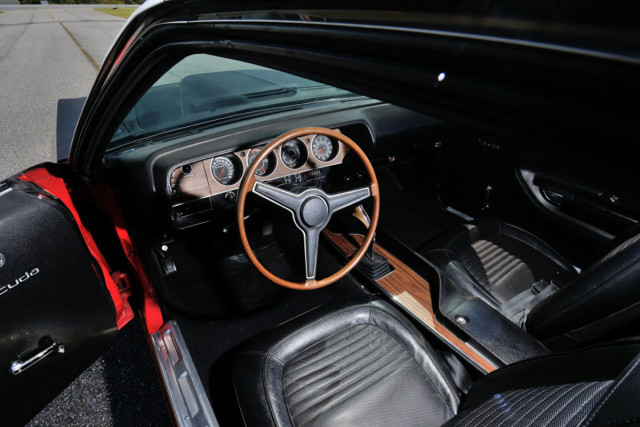 AAR ‘Cuda production lasted just two months – March and April of 1970 – and would yield just over 2700 cars, while 2399 Dodge Challenger T/As would ultimately be built to satisfy the homologation requirements. With the Plymouth brand sadly nothing but a memory now, the prospects of a revamped AAR ‘Cuda in the future seem remote at best. Due to their desirability and rarity, original AAR ‘Cudas command a good chunk of change at resale, though the prices still pale in comparison to those of its originally Hemi-powered stable mates.
AAR ‘Cuda production lasted just two months – March and April of 1970 – and would yield just over 2700 cars, while 2399 Dodge Challenger T/As would ultimately be built to satisfy the homologation requirements. With the Plymouth brand sadly nothing but a memory now, the prospects of a revamped AAR ‘Cuda in the future seem remote at best. Due to their desirability and rarity, original AAR ‘Cudas command a good chunk of change at resale, though the prices still pale in comparison to those of its originally Hemi-powered stable mates.
However, a ray of hope does still exist for Mopar fans. At the 2104 SEMA show, a 2015 Dodge Challenger T/A concept car was unveiled by Chrysler to much acclaim. Borrowing heavily from both the original T/A and the AAR ‘Cuda, the concept is outfitted with an AAR-style hood and side pipes to go along with its 485 horsepower, 392 cubic inch V8. Six-piston Brembo brakes, aero, and rolling stock are borrowed from the mighty Challenger SRT Hellcat, while a Mopar coilover suspension, racing seats and a host of other performance enhancements are on hand as well.
With the Challenger T/A concept it looks at though the spirit of these road racing Mopar musclecars could potentially live on through a modern day interpretation. After all, Chrysler tells us that just about all these parts are available through the Mopar parts catalog right now.



